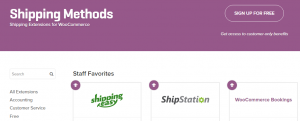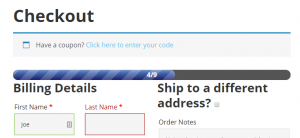- Aug 31, 2016
 0
0- by A2 Marketing Team
A collation of 33 different shopping cart abandonment studies found that, on average, 68.63% of customers outright abandoned their orders instead of purchasing them. That’s a staggering number, and one which should send shivers down the spine of every player in the e-commerce field.
While numbers don’t lie, they also don’t tell us the entire story. Many customers may never have intended to complete their purchases in the first place, while others may have been dissuaded by flaws during the checkout process. While we can’t do anything about the former, we can tackle the latter by figuring out where the problems are, and how to fix them.
During this article, we’ll be going over ten of the most common reasons that lead to shopping cart abandonment, then we’ll figure out how to solve them. Let’s get started!
1. Don’t Ask for More Information Than Necessary
Every business thrives on information – the better you know your customers, the better you are at serving them and anticipating their needs. This gets a little more complicated when we add online businesses to the mix, since most users are (rightly) concerned about their privacy.
Asking for too much personal information during the checkout process may prompt users to abandon their cart due to the perceived intrusion of their privacy. Therefore, we recommend that you stick to only asking for the information you need to process the order.
2. Enable Customers to Check Out Without Registering
Forcing customers to register could discourage them from completing the checkout process – especially if they don’t want the hassle of managing an additional account, or their personal information to be stored. This thinking is so prevalent that only one-third of the top 100 online retailers require customers to create an account to complete their purchases.
The simple solution to this problem is to enable a guest checkout for your online store, which is surprisingly simple if you’re using WooCommerce.
3. Offer Several Shipping Options
These days, anyone can purchase practically anything they want online with ease. In fact, finding most items is so simple that clients are liable to look for them elsewhere if your store doesn’t offer their preferred shipping option.
The only two ways around this issue are to expand your roster of shipping companies, or enlist the aid of a fulfillment service. WooCommerce enables you to implement either of those choices through its extension system:
4. Be Upfront About Shipping Costs
While we’re on the subject of shipping, let’s talk about rates. They are the unfortunate and unavoidable side effect of making online purchases, and a lot of customers will take it personally if you wait until the last step of the process to disclose them.
The logical way to tackle this problem is to provide customers with basic shipping rates, which they can use to preview costs before busting their credit cards out. You may also consider offering free shipping for certain items depending on your cost structure, but that’s up to you!
5. Start Accepting PayPal (And Consider Other Payment Methods)
Refusing to accept PayPal on your e-commerce store could cost you dearly in lost business, or so we can conclude from the fact that PayPal counted over 180 million active users during the first quarter of 2016.
Bowing to the might of PayPal might be the logical choice here. Adding a Buy Now button to any site is a breeze, and there are extensions which will take care of the process for you if you happen to use WooCommerce. While you’re at it, you may also want to consider additional payment methods if you feel they could expand your client base.

6. Add a Progress Indicator
A frustrated customer is not a happy customer, and one of the easiest ways to get someone to abandon their cart is neglecting to provide clear progress indicators throughout the checkout process.
Adding this functionality to your WooCommerce site is possible, but it requires a bit of elbow grease. This tutorial will guide you through the process – which requires modifying a couple of files – once you’re done, you can customize the indicator to your liking:
7. Include Product Images
You might think there’s no way a customer could finalize a purchase only to find that they bought the wrong item – but let us tell you, it happens!
A lot of online retailers tackle this problem with an elegant solution: showing pictures alongside the names of the items during the checkout process. WooCommerce doesn’t include this option by default, but with a little tweaking, you can add product thumbnails during the checkout process to make it more user friendly.
8. Enable Customers to Save Items for Later
A sad fact that all adults must face sooner or later is that we don’t always have the money to buy everything we want, when we want it. A lot of people just browse and add items to their carts for fun – items which may get abandoned unless you include a Save for Later option.
The Save & Share Cart for WooCommerce extension enables you to add this function to your store, alongside the ability for customers to share their saved items with each other:

9. Assure Customers About Your Security Practices
Any online shopper who reads the news has reasons to be concerned when it comes to e-commerce security. Online stores understand this, which is why they often display their safety credentials right up front in the form of trust seals – just like our Better Business Bureau (BBB) accreditation:
Obtaining these seals can be a straightforward process, as is the case with Norton, or you might be required to go through a verification process, such as with the BBB.
10. Offer a Refund Policy
Customers want to feel protected when they make any purchase, and a lack of a refund policy may lead some of them to believe that you don’t trust the quality of the products or services you’re selling.
Crafting an understandable (and reasonable) refund policy is a surefire way to reassure customers that you do have their back in case anything goes wrong – and hey, if you’re confident about your products, this should be a no-brainer.
Conclusion
E-commerce can be incredibly rewarding if you’re determined to find out what your customers need (be it the right products or a simple checkout process), then strive to provide it to them. If you don’t know where to start when streamlining your own checkout, keep the following ten simple fixes in mind:
- Don’t ask for more information than necessary.
- Enable customers to check out as guests.
- Offer a variety of shipping options.
- Be upfront about shipping costs.
- Consider accepting PayPal.
- Add a progress indicator to your checkout.
- Include product images during the process.
- Enable customers to save items for later.
- Reassure customers about your security practices.
- Offer a reasonable refund policy.
Are there any tips for decreasing shopping cart abandonment rates that you’d like to share with us? Let us know in the comments section below!
Image credit: Pixabay.















